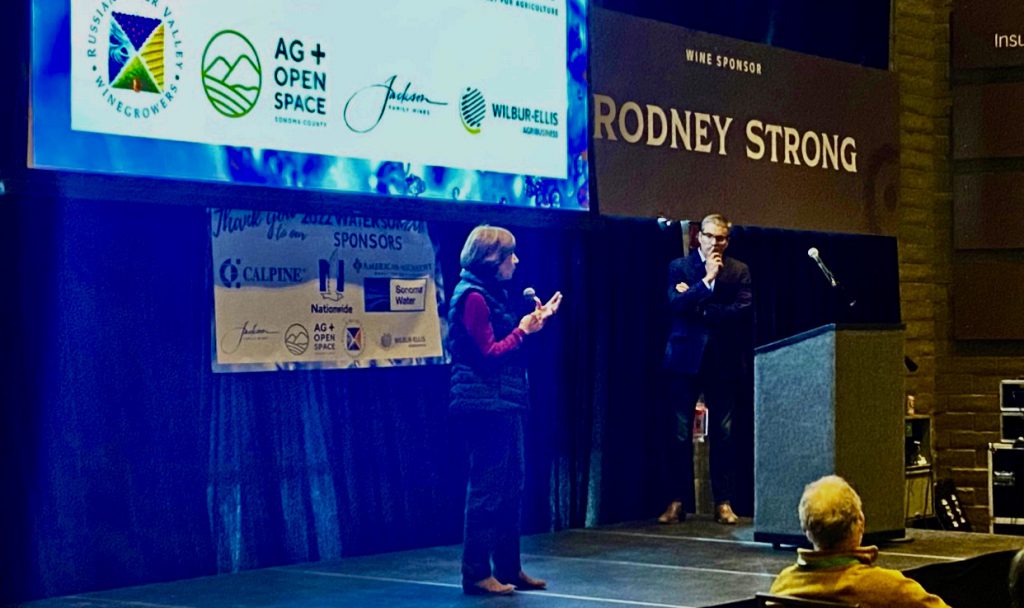
CDFA Secretary Karen Ross appeared this week at the first-ever Sonoma County Farm Bureau Water Summit. She joined California Natural Resources Agency Secretary Wade Crowfoot for a discussion centering on this historic drought and the new normal with climate change.
The two-day meeting hosted presentations on all aspects of water management, water quality, the water rights system, the Sustainable Groundwater Management Act, local water issues, and other topics including new technologies and financing mechanisms.
The secretaries fielded a wide variety of questions from the audience, including questions related to the $5.2 billion in Governor Newsom’s 2021 California Comeback Plan to support drought response and long-term water resiliency. It was noted that just last week the Department of Water Resources announced $150 million of funding awards to support local community water projects, including $40 million for the Sonoma County Water Agency for ten water recycling projects.
Questions about the 2014 water bond, Proposition 1, which included $2.7 billion for storage projects, provided an opportunity to explain requirements for the California Water Commission as it administers the Water Storage Investment Program for public benefit. Seven projects are being funded, and they will create 2.77-million-acre feet of additional water storage space, both above and below ground.
All this comes in addition to the $120 million invested in CDFA’s State Water Efficiency & Enhancement Program (SWEEP) since 2014. The department’s Healthy Soils Program also plays a crucial role in mitigating the challenges brought by drought and climate change by building soil carbon to increase water-holding capacity. CDFA has just completed a funding round of $75 million in Healthy Soils grants to farmers, with another $85 million included in next year’s budget.
Secretary Ross added to the discussion by highlighting a new paradigm the Governor set for collaborating on voluntary agreements to reduce water demand, enhance water flows, and invest in habitat restoration for species. This is an approach modeled in 2014-2015, when Sonoma County growers, vintners, NGOs, and fish agencies voluntarily undertook actions to benefit fish and the ecosystem. These were an alternative to state-imposed curtailments.
Late last month, state and federal water officials joined with a number of California water agencies to announce voluntary agreements to update and implement the Bay-Delta Water Quality Control Plan, and discussions continue to have more water agencies join.


